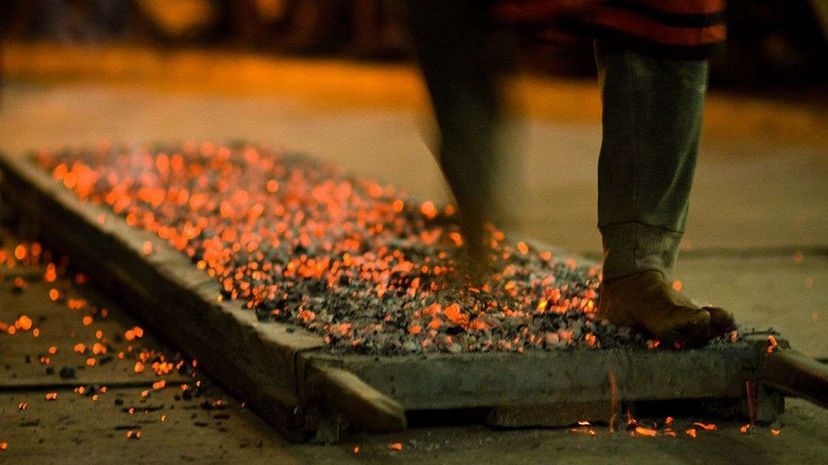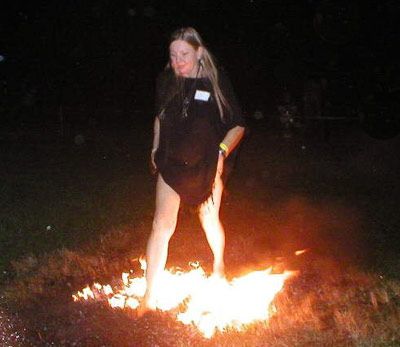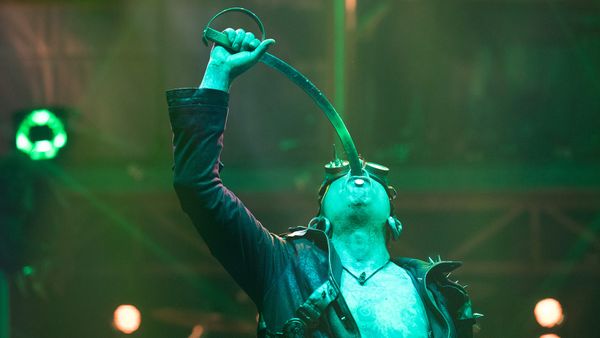
When human feet started burning at Tony Robbins' "Unleash the Power Within" event last week, some people said they were distracted ... by others in line taking selfies.
It doesn't matter if you're "turning fear into power" as a "symbolic experience to prove you can make it through anything." When you're walking on coals you do not stop. Ultimately, 30-40 people received burn treatment from paramedics the organizers had on-site. But another five people had to go to the hospital.
Advertisement
Some are saying it's not a big deal, because the injured people represented less than 1 percent of the 7,000 participants. Maybe they were the lucky ones who "turned their fear into power," while the unfortunate victims proved what? That they didn't have what it takes to make it through anything? What about the two dozen people injured at a similar Robbins' event in 2012? Did their fear-to-power transformer skills malfunction as well?
In any case, if you're planning to attend one of these events, or walk on coals in any other situation, here's some information you might find handy. Coal walking relies on science, specifically heat conduction and insulation. With the right preparation, a trained person can cross embers exceeding 1,000 degrees Fahrenheit (538 degrees C). This is because coal is a lightweight carbon structure that's a poor conductor of heat. It takes longer for heat to transfer from coal to human skin than it would from a good conductor, like a metal frying pan.
Smart coal walkers also let the wood burn down first, so the embers don't retain water. This is because water has a high thermal capacity. Additionally, some burnt wood is better than others to step on, because it's better insulated. Hardwoods like cherry or maple may glow as embers, but they don't actually burn as hot as olive or locust wood.
You're also supposed to pat down and spread the coals out, so you're walking on a flat surface and your feet don't dig into the hotter embers underneath. That's why you keep moving (and don't stop to take selfies), so each step absorbs relatively little heat. Walking limits your contact with each individual coal. If you were meant to stand there and take selfies, it would be called "coal standing," not "coal walking."
One last trick. Most coal walking is done at night so the walkers can cover their path with a layer of ash. This is because ash also is poor at conducting heat. It transfers heat even more slowly to your fleshy little feet. At night the glow of embers is still visible through this layer of ash. But if it were in daylight, everyone would see this literal cover-up.
Even with this kind of preparation, coal walking is still dangerous. It's not all your fault, Tony Robbins. A hot coal can always get stuck on someone's foot. Or unseen little pieces of metal or pockets of steam can unpredictably burn a walker. You definitely don't want to trip and fall either, because that could kill you. How much "power" would you have then?
But seriously, there's a lot of misinformation out there about the physical principles behind this stunt. So even if an event organizer tells you they have all the necessary permits for a coal walk ... even if they have fire prevention officers present ... and yes, even if they have paramedics and a rescue unit on-site ... do us a favor and please be careful.
Advertisement


